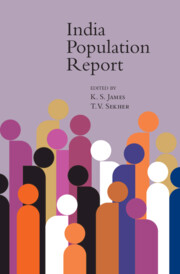9 - Malnutrition Status of Women, Children, and Adolescents in India and its Relation with Educational Attainment
Published online by Cambridge University Press: 15 August 2023
Summary
Introduction
India is going through a rapid socio-economic transition resulting in considerable changes in dietary patterns and nutrition levels among different sections of the population. Despite several policy initiatives to combat malnutrition (Ministry of Women and Child Development, n.d.) over the past more than four decades, the level of malnutrition in India remains abysmally high. Malnutrition was the top cause of death and disability in India in 2017, followed by dietary risks, including poor diet choices, according to the 2017 Global Burden of Disease study (Institute for Health Metrics and Evaluation [IHME], 2018). The groups at the greatest risk of malnutrition are children, adolescents, and women. According to the 2020 Global Nutrition Report, every second child under five years of age in India is malnourished in some form or the other, with a prevalence of wasting being 21 per cent and stunting being 38 per cent – both figures notably greater than the than the average for Asia, where the wasting level is over 9 per cent and stunting level 23 per cent (Development Initiatives, 2020). Additionally, 36 per cent of children under five years of age are underweight, while 2 per cent are overweight (International Institute for Population Sciences [IIPS] and ICF International, 2017). A poor nutritional status, particularly in early life, can have lifelong consequences on physical and psychological well-being and can also impair long-term employment opportunities (Black et al., 2013).
The proportion of under-nutrition among women of reproductive ages declined from 36 per cent in 2005–06 to 23 per cent in 2015–16; at the same time, the proportion of over-nourished (overweight or obese) women increased from 13 per cent to 21 per cent. Maternal under-nutrition contributes to foetal growth restriction, which increases the risk of neonatal deaths and, for survivors, stunting by two years of age (Black et al., 2013), thus passing on the burden of under-nutrition to the next generation.
School-age children and adolescents, too, are affected by under-nutrition and over-nutrition, but they failed to gain attention until the recent past; women and child health, particularly the health of children below the age of five years, had been the focus of researchers and policymakers all these years. According to a study on worldwide trends, more children and adolescents aged 5–19 years are moderately or severely underweight than obese (NCD Risk Factor Collaboration [NCD-RisC], 2017).
- Type
- Chapter
- Information
- India Population Report , pp. 313 - 346Publisher: Cambridge University PressPrint publication year: 2024



